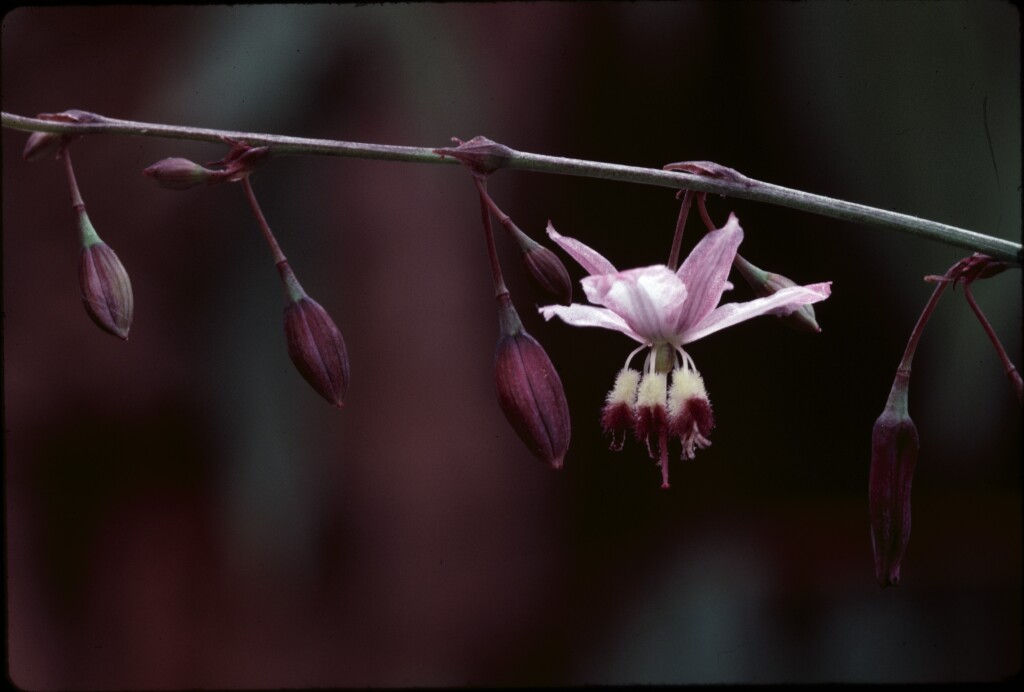Arthropodium milleflorum
(DC.) J.F.Macbr. Pale Vanilla-lilyPlants tufted, to c. 1.3 m high. Roots tuberous, tubers plump, 2–3 cm long, 2–8 cm distant from rootstock. Leaves linear, flat, spreading, to 40 cm long, 1–25 mm wide, often somewhat glaucous. Inflorescence erect, usually with a few spreading branches. Flowers usually 2–9 per node, white, pale mauve or pink; perianth segments spreading to recurved, 5–8 mm long, sepals narrower than petals; stamens shorter than perianth segments, filament hairs white proximally, usually purple near anther, rarely white throughout; anther purple. Capsule globose, 4–5 mm long. Seeds 2–3 mm long. Flowers mostly Nov.-Feb.
MuM, Wim, GleP, VVP, VRiv, MuF, GipP, OtP, WaP, Gold, CVU, GGr, DunT, NIS, EGL, EGU, WPro, HSF, HNF, OtR, Strz, MonT, HFE, VAlp. Also SA, NSW, Tas. A widespread species, predominantly in montane to subalpine sites on and near the Divide, particularly in rocky situations, but also scattered in cooler lowland districts (e.g. Portland and Hamilton areas in west, Creswick, Mornington Peninsula, Warby Range, Dandenong Ranges and foothills, Gelliondale near Yarram, etc.).
Conran, J.G. (1994). Liliaceae. In: Walsh, N.G.; Entwisle, T.J., Flora of Victoria Vol. 2, Ferns and Allied Plants, Conifers and Monocotyledons, pp. 637–686. Inkata Press, Melbourne.
 Spinning
Spinning


